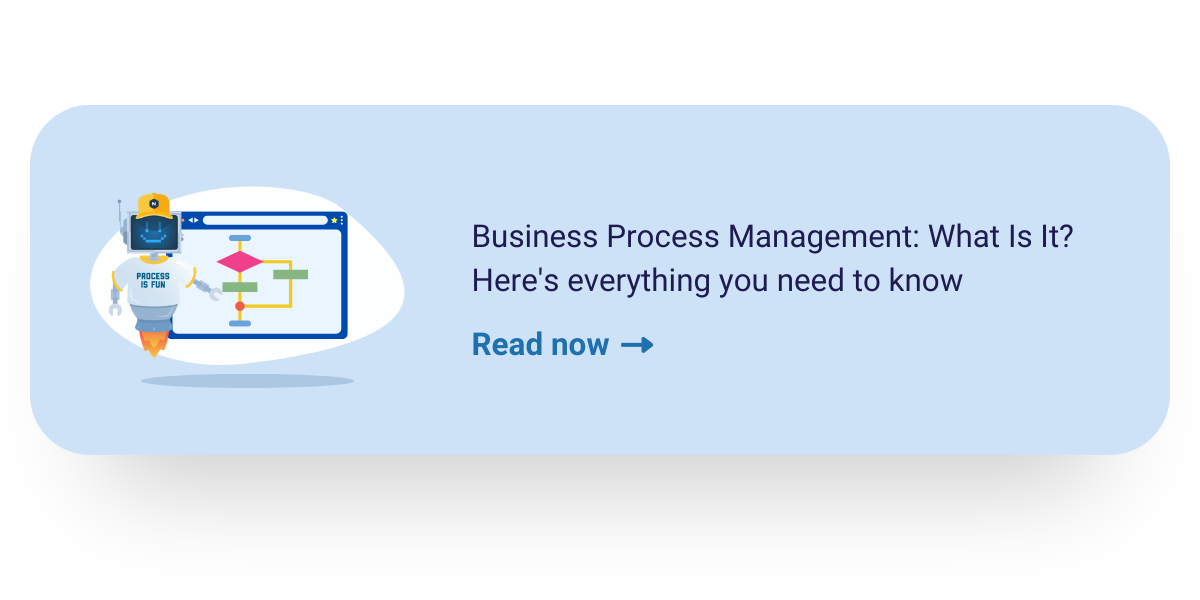Performance Management Drives Business Process Improvement
Visionary management thinker Peter Drucker told us, "you cannot manage what you cannot measure." These words of wisdom are essential when managing your business processes. Performance Management is the key that opens the door to continuous process improvement.
What is Performance Management?
Performance management aligns a company's strategic goals with the output derived from its people, processes, equipment, and other resources - a lack of process alignment results in significant waste.
Imagine yourself in a rowboat. Paddle too hard on the left, and you veer right. Too hard on the right, and you go off to the left. Paddling forward with one oar and backward with the other has you going in circles.
Maximum performance comes with everyone rowing hard in the same direction.
Performance management starts at the company's top and cascades down to the various divisions, departments, managers, and employees.
Translate the company's strategic goals at each level into specific, measurable objectives.
At a strategic level, the company may want to increase quarterly revenue by 15%. Each division, department, management, and employee may have different objectives contributing to the overall strategy to achieve that goal.
- Marketing needs to devise and implement a marketing campaign that drives more traffic to the website
- Sales need to close more accounts
- A software manager needs to ship the new product on time
- A developer must improve quality to reduce rework
Everyone may have a job with different goals but must row in the same direction.
You can look at performance management from multiple perspectives. Employee performance consists of setting goals, monitoring and reviewing performance, and rewarding good behavior.
In this post, we are focusing on business processes and business process improvement (BPI). Nevertheless, the same theory applies. Processes are one of the resources management uses to meet their business goals.
Look at each process from the perspective of how it helps the company move forward. The best way to ensure processes deliver value now and into the future is through Business Process Management (BPM),
Performance Management and BPM
There are five components to a BPM program.
- Process Discovery involves working with the business to identify and document current processes using BPM tools. Check out this article on understanding your processes through identification & process discovery for additional detail.
- Process Modeling is the precise and consistent mapping and documentation of your processes.
- Process Management ensures that process metrics and controls defined as part of process modeling are measured and managed. This responsibility falls upon the process owner and the process manager.
- Process Optimization and Improvement is the combination of process management, optimization, and improvement activities that drive process innovation.
- Process Automation is automating a set of activities or business rules in BPM or workflow management software.
BPM is a cycle, and each of the five components is essential to process improvement. However, as Drucker said, you can think about improving processes without first defining what you should be measuring.
Let's take a look at some best practices around defining process metrics.
Process Performance Metrics
Here are seven factors that I believe are critical to the value of your metrics.
- Strategic: Use business strategy to define performance measures
- Ease of understanding: ensure that your performance measures are simple to understand
- Timely: your performance measures must be timely and accurate
- Goals and targets: performance measures need to relate to specific goals and targets
- Improvement: make sure that your performance measures focus on improvement opportunities
- Trending: base your performance measures on trends rather than on snapshots
- Objectivity: make your criteria objective, not based on opinions
Metrics can also fall into different categories:
Here are several different categories of process measurement:
- Environmental – these are the external factors that can impact the success of the process. These factors could include a change in laws or regulations. While not under the control of BPM, you need to be aware of external factors to develop contingencies.
- Output – related to the results or the products that are created, for example, units per hour.
- Quality – expands on the output category and looks at production quality.
- Efficiency – this looks at the output and quality versus the costs.
- Impact – this looks at the process's effect on business performance.
Consider using the SMART approach to defining metrics. SMART stands for specific, measurable, achievable, relevant, and time-bound.
Performance Management System
When it comes to improving business processes, one of the most effective performance management systems is PDCA (Plan, Do, Check, and Act). Also known as the Demming cycle, this performance management process can be traced back to earlier works by Walter A. Shewhart.
Use PDCA in conjunction with process improvement projects. Once you have identified a need to improve the process, you can begin to develop plans.
- Plan: Identify the specific improvement you which to implement. For example, improved productivity to enhance customer satisfaction.
- Do: Implement the change in a small test case or proof of concept.
- Check: Analyze the test results utilizing the metrics you initially defined for the process.
- Act: if the test is successful, implement what you learned on a larger scale. You can repeat the cycle if the test fails to deliver the desired results.
Your job doesn't end with the implementation of the process. Situations change, and you should constantly be innovating and Improving performance. Performance management is an essential part of any BPM and process improvement. Originally published Feb 7, 2017 16:51, updated Aug 29, 2022
Originally published Feb 7, 2017 16:51, updated Aug 29, 2022


